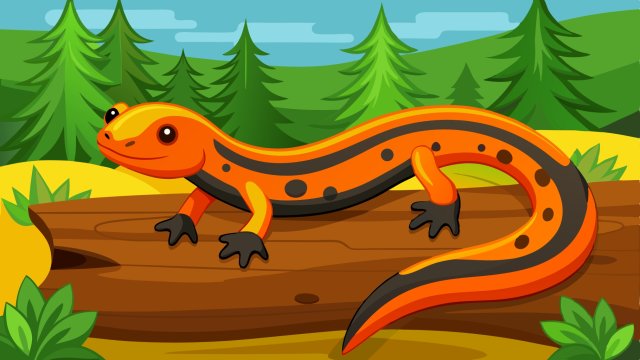Amphibians
Find fun amphibian facts for kids. Explore frogs, salamanders, and other amphibians in this colorful encyclopedia guide.

🐸 Amphibians Facts for Kids – Animal Guide
🌟 Introduction
Amphibians are special animals that live part of their lives in water and part on land. They begin life as tiny creatures with gills that help them breathe underwater. As they grow, they go through a big change called metamorphosis and develop lungs so they can breathe air on land. Amphibians are amazing because they help keep the environment balanced and show when nature is healthy or in trouble.
There are three main types of amphibians: frogs and toads, salamanders and newts, and caecilians (which look like big worms but are really legless amphibians!).
🧬 Scientific Classification
- Kingdom: Animalia (Animals)
- Phylum: Chordata (Animals with a backbone)
- Class: Amphibia (Amphibians)
Scientists have discovered more than 8,000 kinds of amphibians around the world.
🐸 What Makes an Amphibian Unique?
Amphibians have many cool features:
- Moist Skin: Their skin helps them breathe by absorbing oxygen.
- Cold-Blooded: Their body temperature changes with the weather.
- Eggs in Water: They lay soft eggs that must stay wet.
- Metamorphosis: They start as larvae with gills, then grow lungs and legs.
Examples:
- Frogs have long back legs for jumping and sticky tongues for catching insects.
- Salamanders look like lizards but have moist skin and can regrow tails.
- Caecilians live underground and are rarely seen.
🏞️ Where Amphibians Live
Amphibians are found on every continent except Antarctica. They need wet places to survive because their skin dries out easily.
Habitats:
- Rainforests
- Swamps and wetlands
- Streams and ponds
- Moist woodlands
Some frogs even live high in trees, while others burrow underground.
🍽️ What Amphibians Eat
Adult amphibians are carnivores, which means they eat meat.
Their diet includes:
- Insects
- Worms
- Small fish
- Spiders
- Snails
Frogs use their long sticky tongues to grab prey, while salamanders quietly sneak up on their food.
🐣 Life Cycle of an Amphibian
All amphibians go through metamorphosis:
- Egg Stage: Female amphibians lay eggs in water.
- Larva Stage: They hatch as larvae (like tadpoles) and breathe through gills.
- Metamorphosis: They grow legs, develop lungs, and lose their gills.
- Adult Stage: They can live on land and in water.
Did you know? A frog tadpole looks like a tiny fish but slowly changes into an adult frog!
🛡️ Why Amphibians Are in Danger
Amphibians are some of the most threatened animals in the world. Almost half of all amphibian species are at risk of disappearing.
Main threats:
- Pollution in water
- Climate change
- Losing their habitats
- Disease (like chytrid fungus)
- Invasive species
When amphibians get sick or die off, it is often a sign that the environment is unhealthy.
🌟 Fun Facts About Amphibians
- The Goliath Frog is the biggest frog and can weigh as much as a house cat.
- Wood Frogs can freeze solid in winter and thaw out in spring.
- Axolotls stay in their larva form their entire lives.
- Some toads release toxins that keep predators away.
- Caecilians have rings around their bodies that make them look like giant worms.
📚 Vocabulary List
| Word | Definition |
|---|---|
| Amphibian | An animal that lives in water and on land |
| Metamorphosis | A big change in body form during life cycle |
| Larva | Young stage before becoming an adult |
| Gills | Organs that help animals breathe in water |
| Cold-blooded | Body temperature changes with the surroundings |
| Camouflage | Colors that help animals hide |
| Chytrid Fungus | A disease that harms amphibians |
| Predator | An animal that hunts other animals |
| Bioindicator | A species that shows if an environment is healthy |
| Regeneration | The ability to grow back lost body parts |
🧒 Kid-Friendly Summary
Amphibians are cool animals that start life in water and later move to land. Frogs, toads, salamanders, and caecilians all belong to this group. They breathe through their skin and help control insect populations. Amphibians are also important because they tell us when the environment is in trouble. Even though they face many dangers, people all over the world are working to protect them.

















































